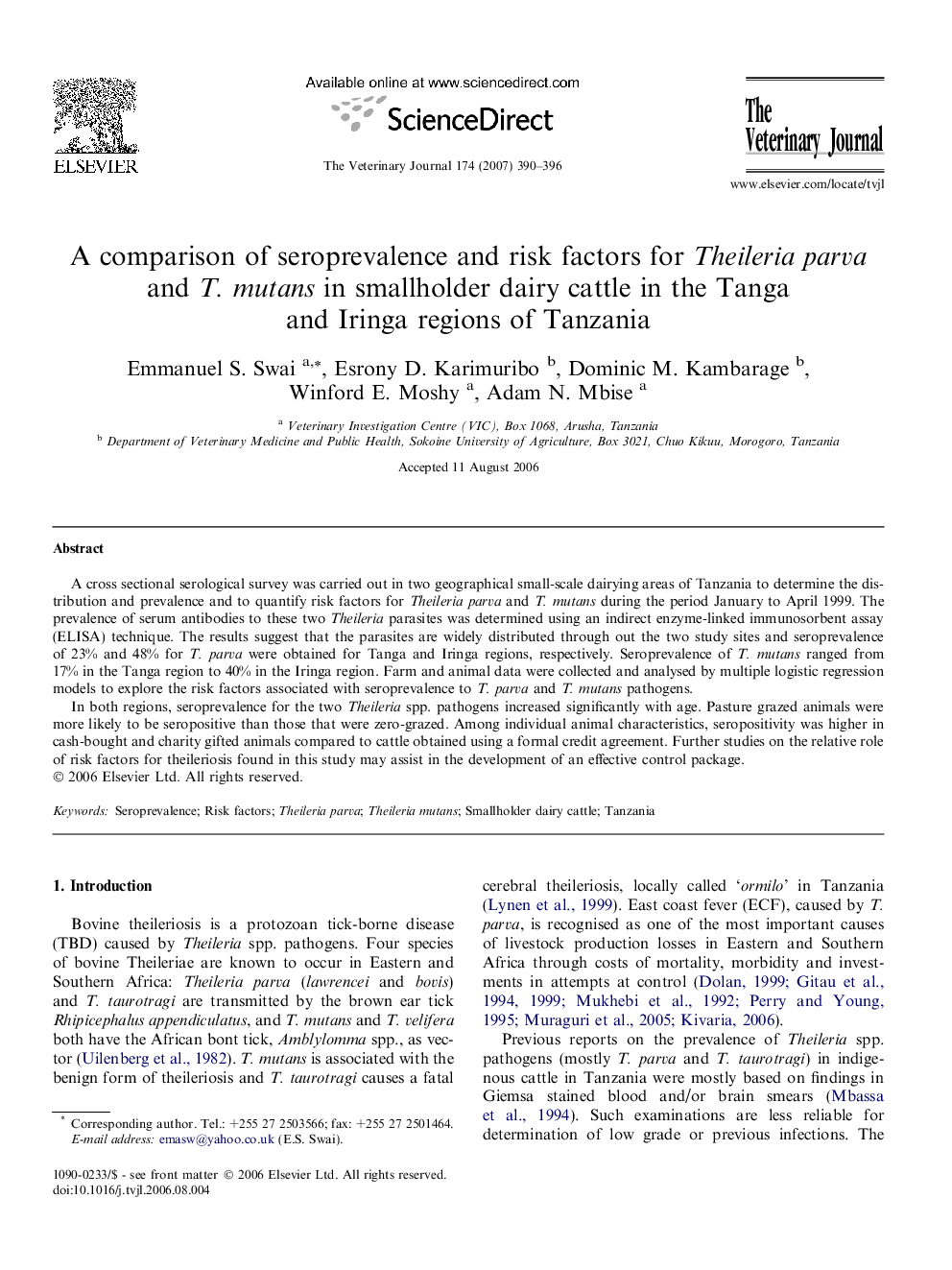| کد مقاله | کد نشریه | سال انتشار | مقاله انگلیسی | نسخه تمام متن |
|---|---|---|---|---|
| 2465586 | 1111834 | 2007 | 7 صفحه PDF | دانلود رایگان |

A cross sectional serological survey was carried out in two geographical small-scale dairying areas of Tanzania to determine the distribution and prevalence and to quantify risk factors for Theileria parva and T. mutans during the period January to April 1999. The prevalence of serum antibodies to these two Theileria parasites was determined using an indirect enzyme-linked immunosorbent assay (ELISA) technique. The results suggest that the parasites are widely distributed through out the two study sites and seroprevalence of 23% and 48% for T. parva were obtained for Tanga and Iringa regions, respectively. Seroprevalence of T. mutans ranged from 17% in the Tanga region to 40% in the Iringa region. Farm and animal data were collected and analysed by multiple logistic regression models to explore the risk factors associated with seroprevalence to T. parva and T. mutans pathogens.In both regions, seroprevalence for the two Theileria spp. pathogens increased significantly with age. Pasture grazed animals were more likely to be seropositive than those that were zero-grazed. Among individual animal characteristics, seropositivity was higher in cash-bought and charity gifted animals compared to cattle obtained using a formal credit agreement. Further studies on the relative role of risk factors for theileriosis found in this study may assist in the development of an effective control package.
Journal: The Veterinary Journal - Volume 174, Issue 2, September 2007, Pages 390–396